When I shared the frog illustrations that I created for Canada Post stamps last year, I wrote:
“It was the kind of project I love because it (1) involved learning about wildlife; (2) required a lot of detail, which is kind of my default; and (3) showcases subjects I care about.”
That sentiment holds true for this new set of Canada Post stamps, released today, featuring my illustrations of five different fungi (or one lichen and four fungi, if you prefer):

Set of 5 fungi stamps, issued in 2025 by Canada Post, illustrated by Emily S. Damstra
As with the frog stamps, the fungi stamps were a fruitful collaboration with experienced designer Jocelyne Saulnier. In addition to art direction for the fungi illustrations, she did the graphic design for the stamps, the stamp booklet, the cancellation mark, and the Official First Day Cover (OFDC).
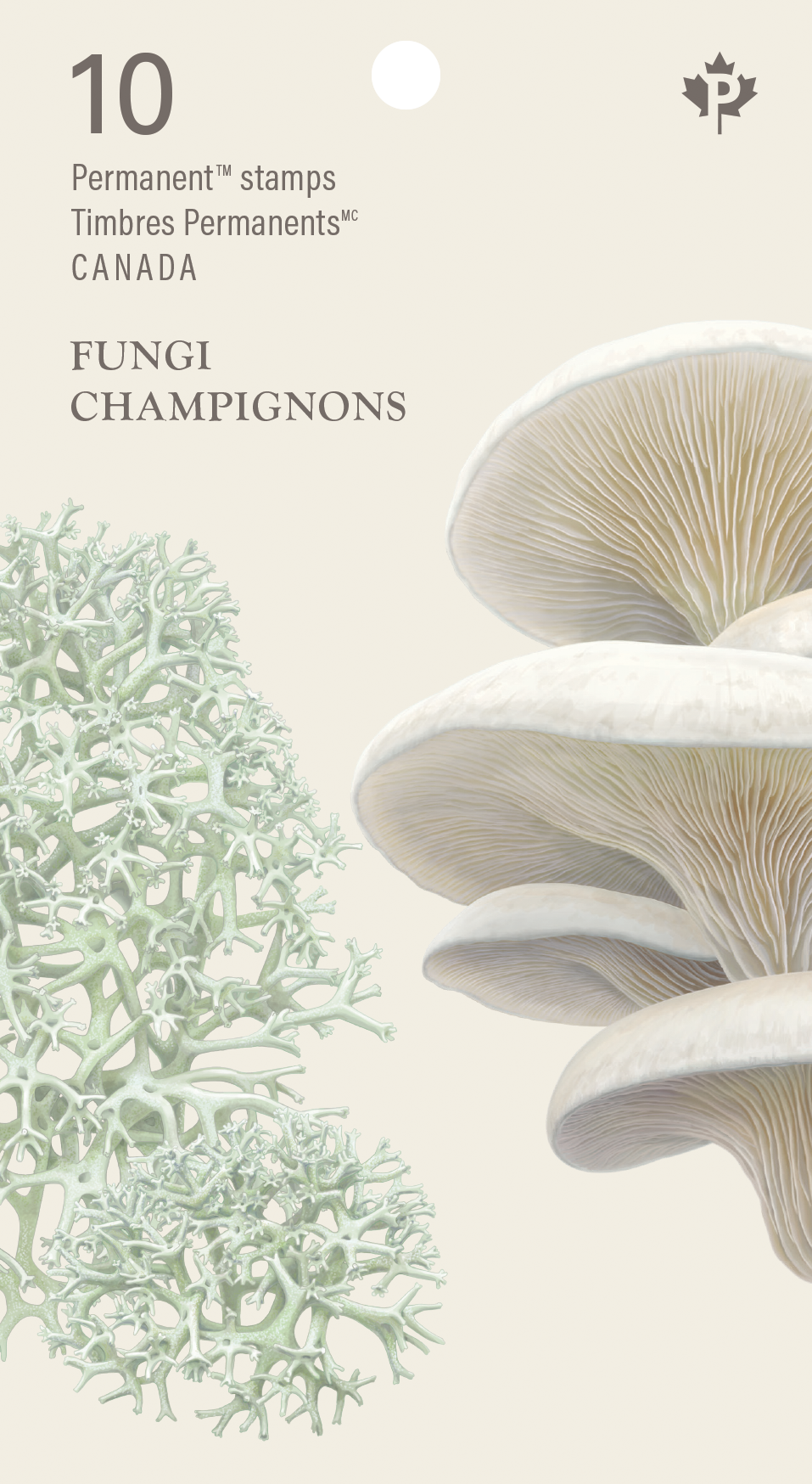
2025 Booklet of fungi stamps; front
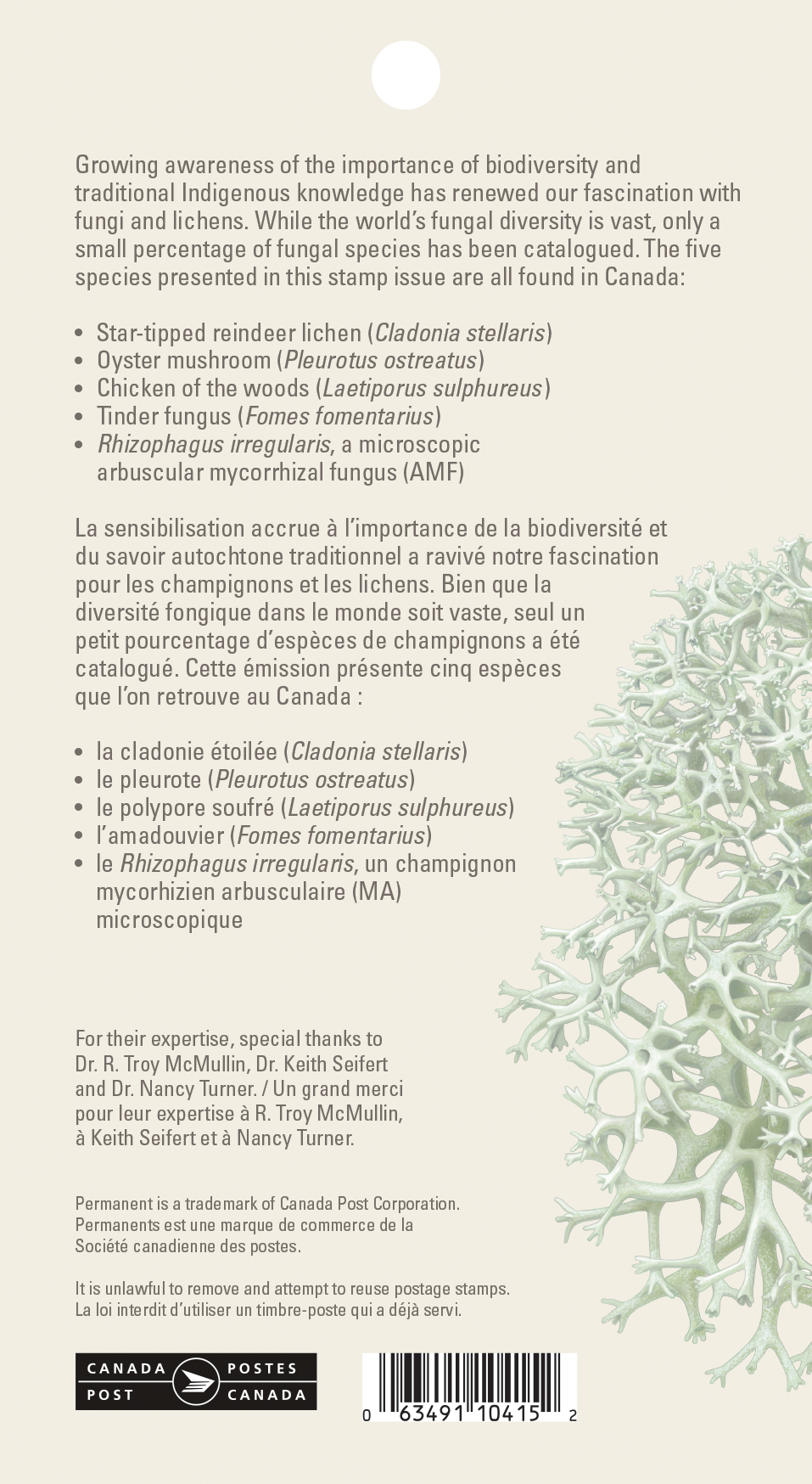
2025 Booklet of fungi stamps; back

2025 Booklet of fungi stamps; interior
A brief description of each species, taken from the Canada Post press release, follows each image below:
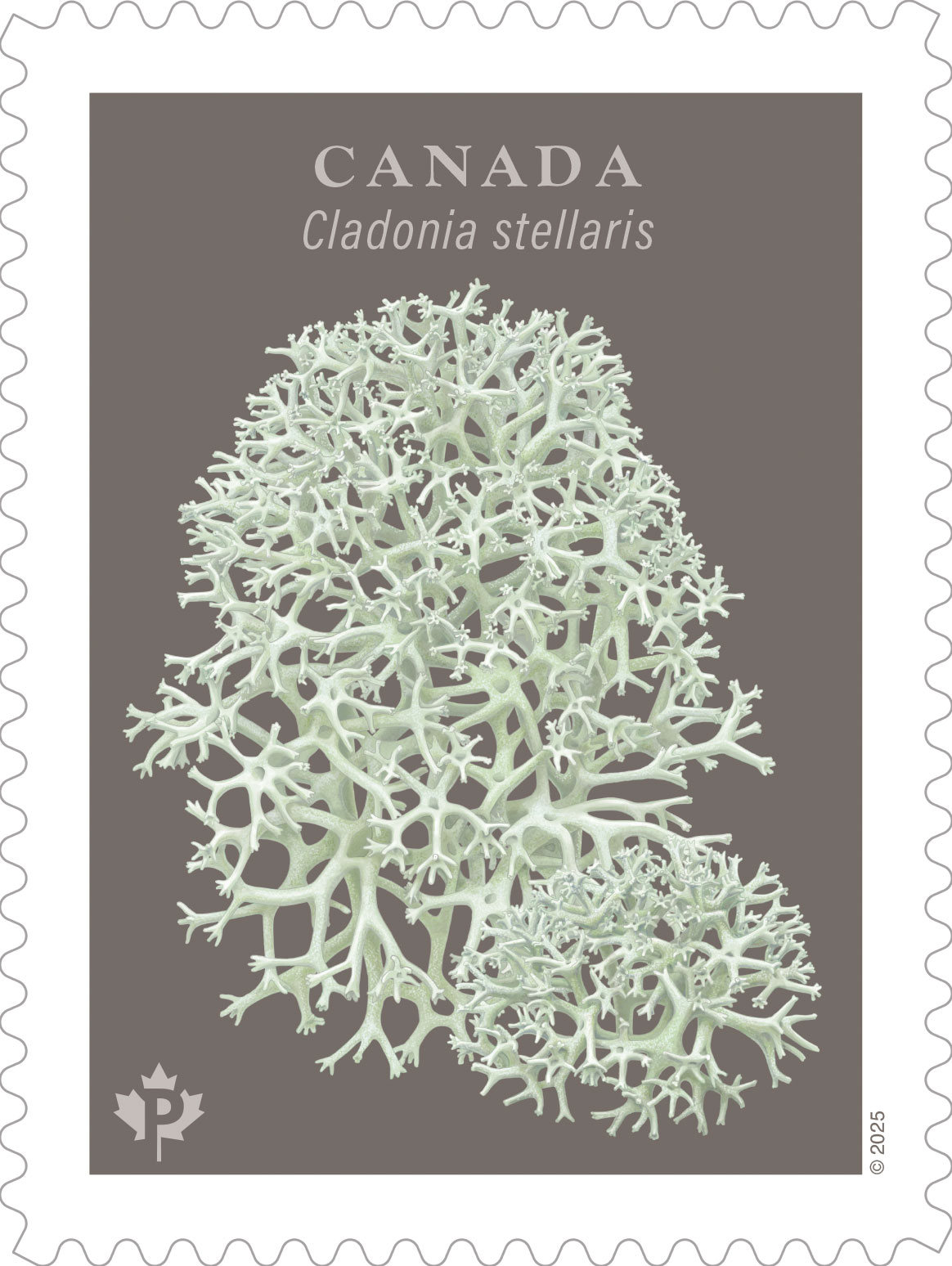
2025 Canada Post lichen stamp featuring Cladonia stellaris
Star-tipped reindeer lichen (Cladonia stellaris)
Lichens are symbiotic organisms where a fungus and an alga grow as one. Abundant in the North, star-tipped reindeer can be found in every province and territory.
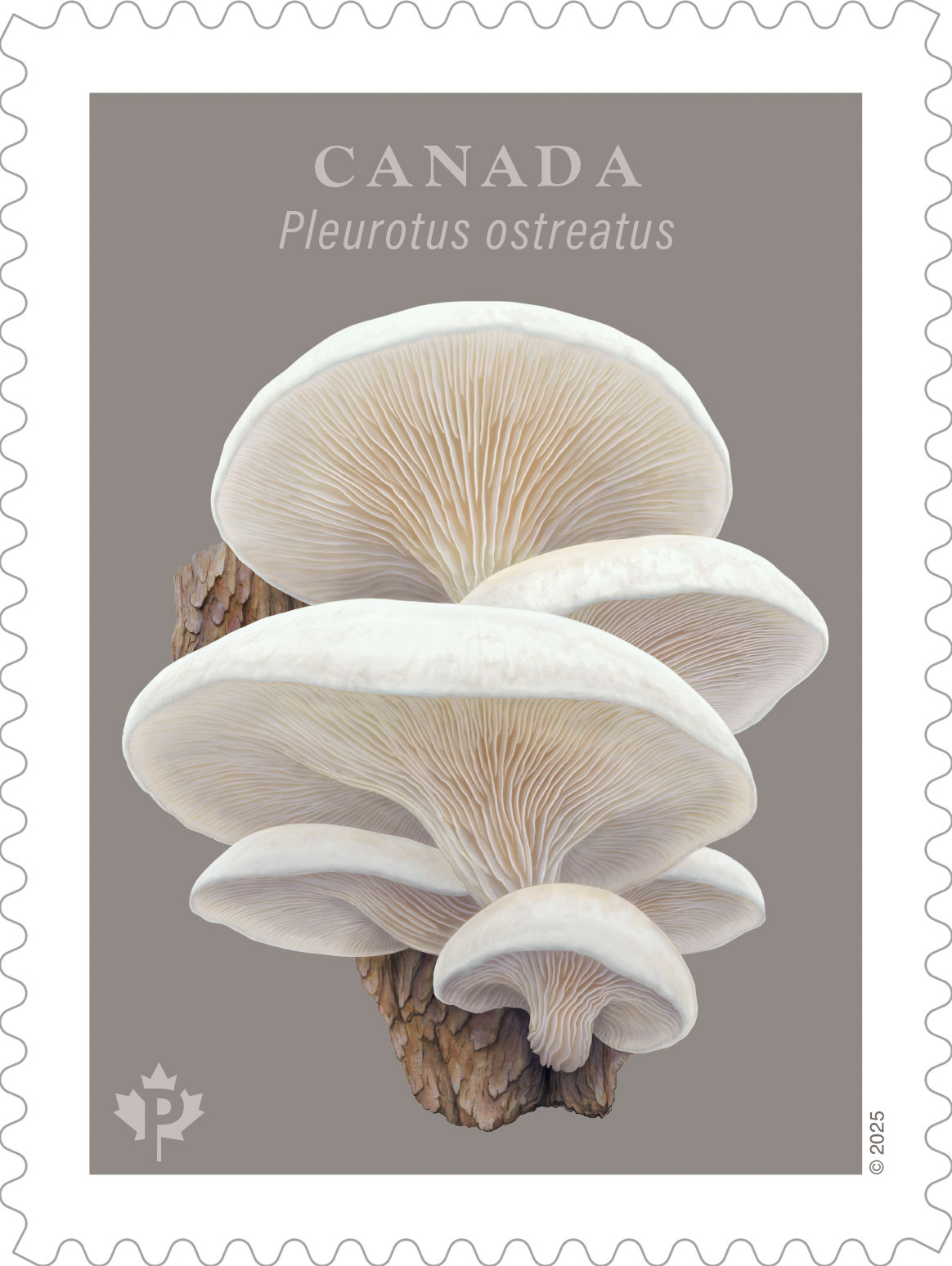
2025 Canada Post fungus stamp featuring Pleurotus ostreatus
Oyster mushroom (Pleurotus ostreatus)
These shell-shaped mushrooms are a familiar ingredient for many cuisines and were traditionally eaten by Indigenous Peoples.
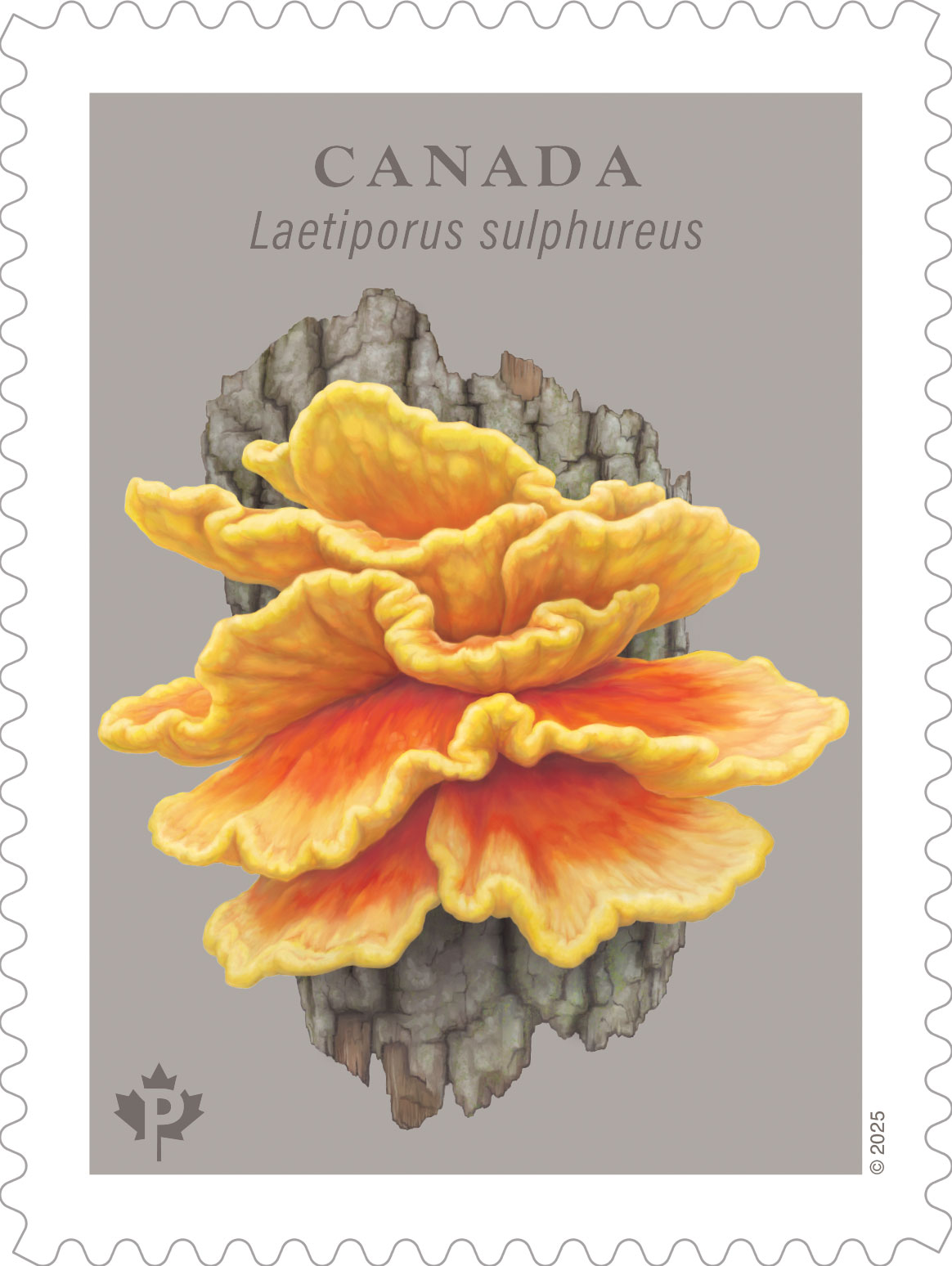
2025 Canada Post fungus stamp featuring Laetiporus sulphureus
Chicken of the woods (Laetiporus sulphureus)
With its large, yellow and orange “shelves,” many First Nations traditionally used chicken of the woods to smooth and soften buckskin for clothing.
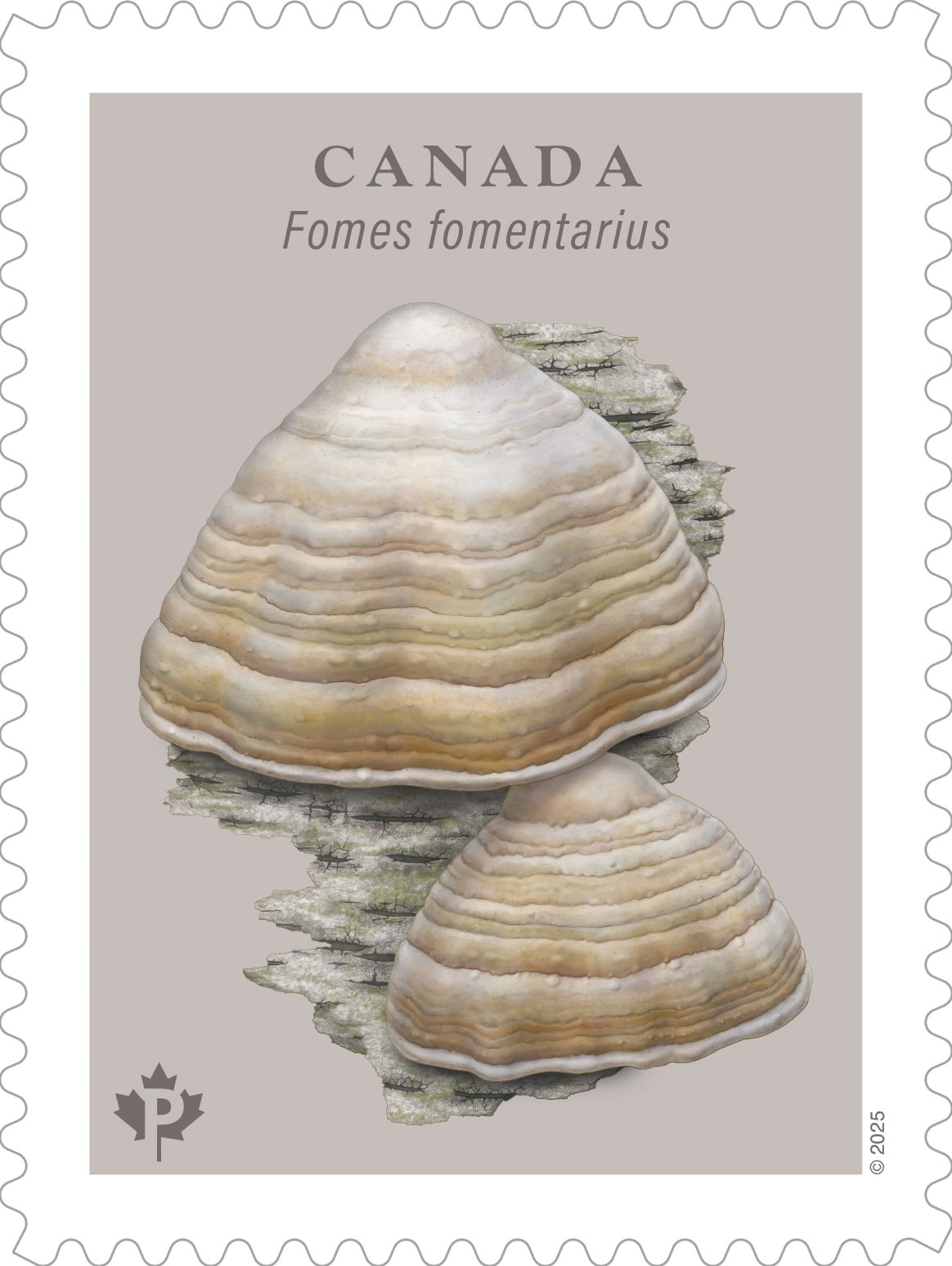
2025 Canada Post fungus stamp featuring Fomes fomentarius
Tinder fungus (Fomes fomentarius)
Tinder fungus, which makes hard, robust conks on trees that last for several years, was traditionally used as a source of tinder, including by First Nations.
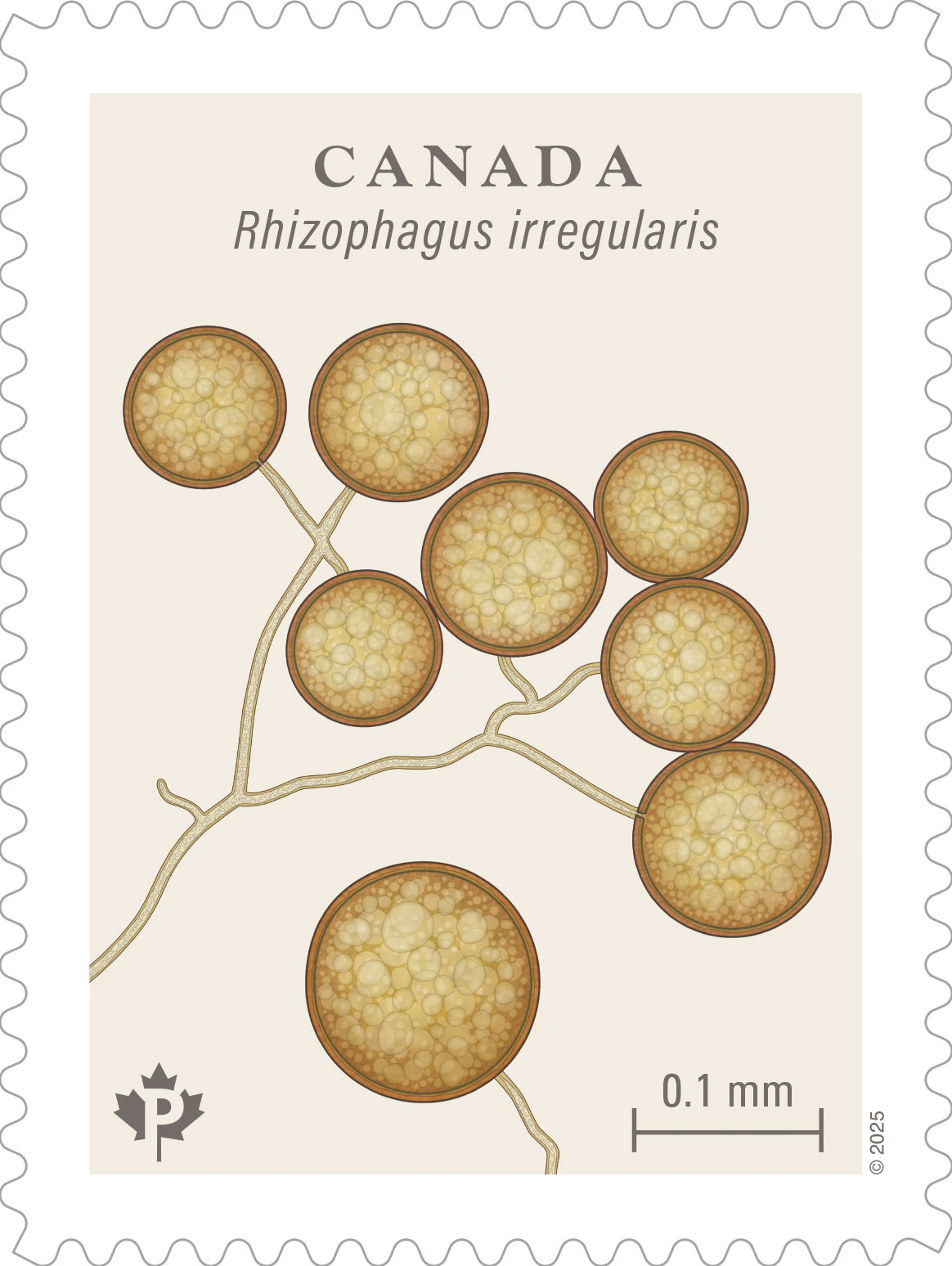
2025 Canada Post fungus stamp featuring Rhizophagus irregularis
Rhizophagus irregularis (no common name)
This microscopic fungus naturally integrates with plant roots. It can be added to farming soil to enhance crop health.
A bit of the process
As with the frog stamps, I created the fungi illustrations digitally. It would have been really difficult to complete the project with traditional media, given the number of minor tweaks and major revisions involved the process. Requests for changes are an inevitable and expected component of any project like this that involves close scrutiny by content experts and multiple rounds of reviews by multiple parties.
Before this project, I’d only done a handful of fungi illustrations; a series of 5 lichen paintings a couple decades ago. For that series, I was painting from direct observation of specimens. For these stamps, I did not have that luxury. As with much of my illustration work, I gathered many reference images to understand the forms, textures, and colours of each species. It was challenging to figure out an efficient way to render complicated aspects like the gills of the oyster fungus and the lacy mazes of the lichen tufts, so it is gratifying to see those two species appear at a larger size on the booklet and the OFDC.
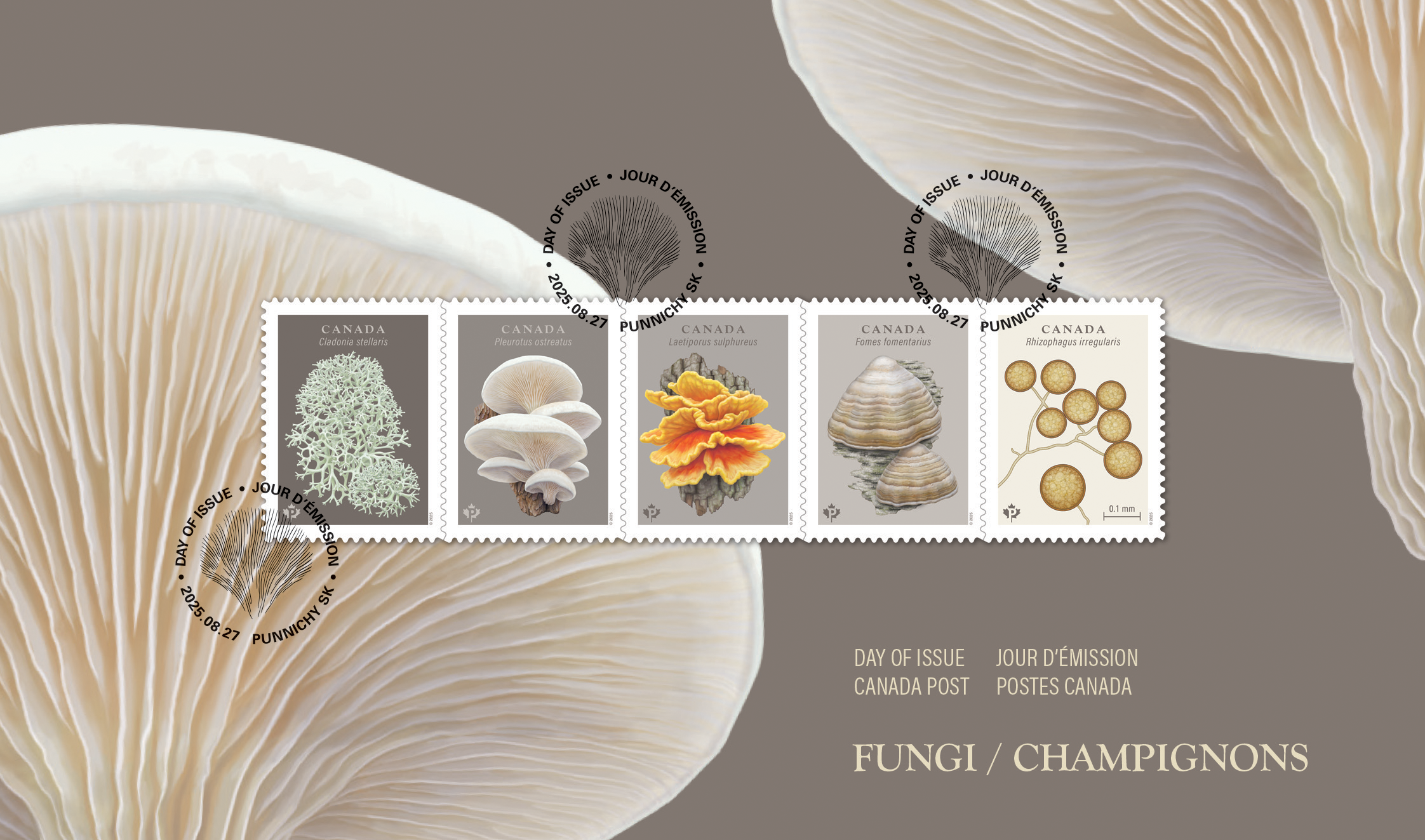
2025 Official First Day Cover for the set of fungi stamps; front
Note the cancellation mark on the front of the OFDC. It’s meant to represent a spore print from an oyster mushroom.

2025 Official First Day Cover for the set of fungi stamps; back
I particularly enjoyed rendering the bright colours of the Chicken-in-the-Woods fungus; someday I hope to encounter such a sight out in the woods!
One Comment
Comments are closed.
Im immediately going to the post office to buy these, I don’t even send mail it’s just really neat mycologically themed art